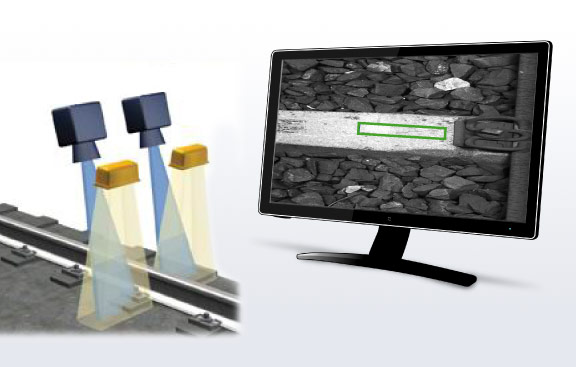CrackCheck is an automatic inspection system, which checks concrete sleepers and the “slab track” for cracks at high speeds of more than 100 km/h and produces a rail condition protocol as a result, which generates an objective status of the inspected rail for the user with high quality and safety in the shortest time. Using the latest image processing technologies CrackCheck ensures that the rail bed structure inspection is faster, safer and more reliable.
Recording
The picture recording system is integrated in device modules suitable for railway vehicles, which are installed in a carrier frame on the bogie frame or vehicle frame of the carrier vehicle.
Four high-resolution line scan cameras are mounted in such a way that they generate precise, high-quality graphical data on the left and right of the rail.
The photograph is taken controlled along the optical path length by means of an incremental position encoder linked to the wheels and is independent of the speed. The fault pattern assignment to the current rail position is controlled by means of a central chainage system.
The inspection area is illuminated by powerful LED lights. The illumination of the entire inspection area is arranged as a vertically inclined reflected-light illuminator for forming optimal contrast in dry and wet weather conditions.
Documentation
The optimised picture recording for the crack detection makes it possible to highlight even the finest crack structures. The resulting pictures are evaluated online by means of ultra-modern image processing algorithms. The fault patterns are classified automatically and the results are provided in a fault protocol immediately after inspecting the rails, archived in a database or forwarded to superordinated systems.
Résumé
The system is characterized by the following features:
- High resolution (0.5 x 0.5 mm).
- High recognition performance.
- Low incorrect detection rate.
- Easy operation; intuitively controllable user interface.
- Modular concept.
- Low maintenance expenditure.
- Proven suitability for railway vehicles.
- Easy integration thanks to small space requirements both under and in the vehicle.
- Open system; thereby easy adaption to country-specific database systems or central data acquisition on the vehicles.



 CrackCheck
CrackCheck